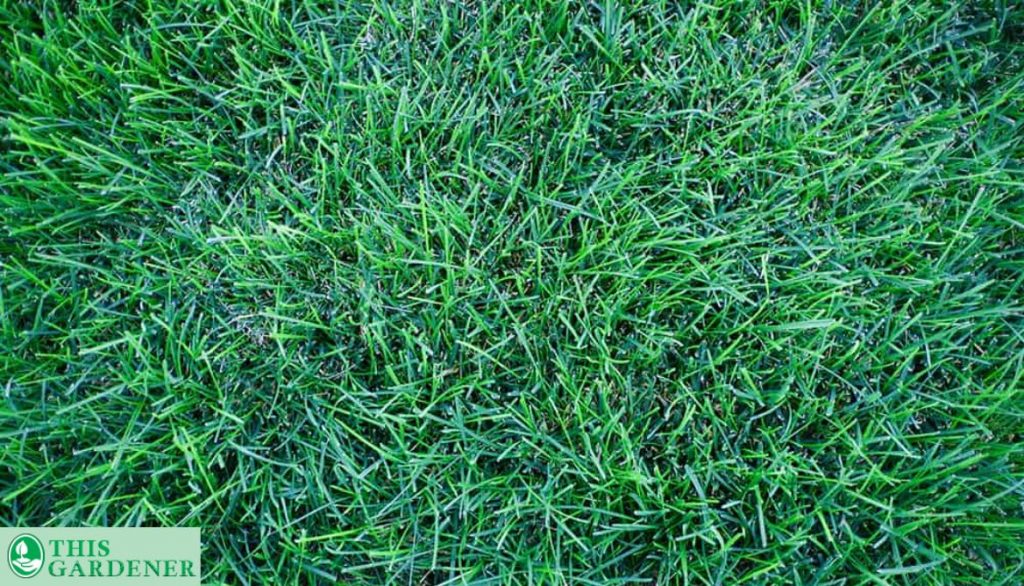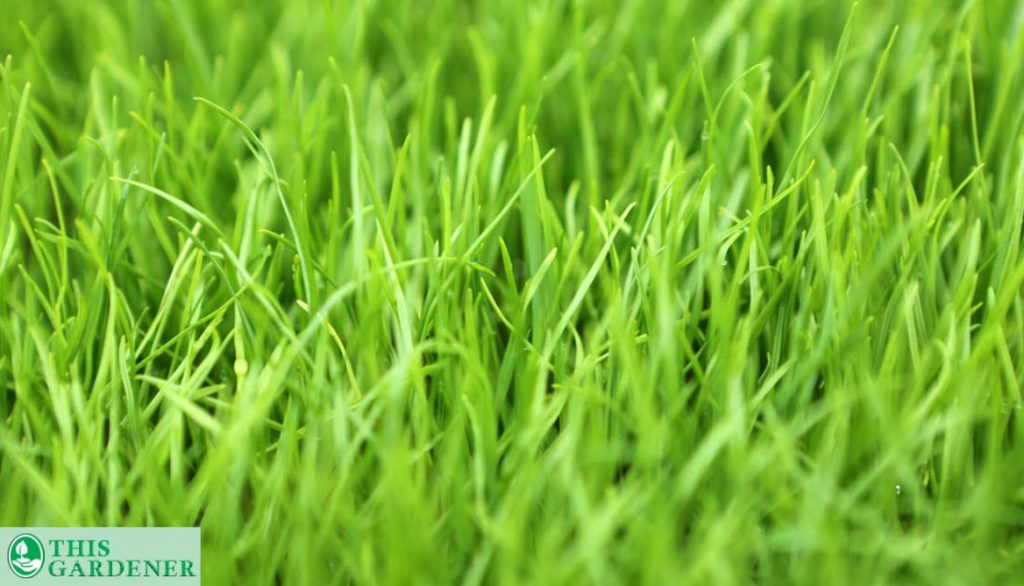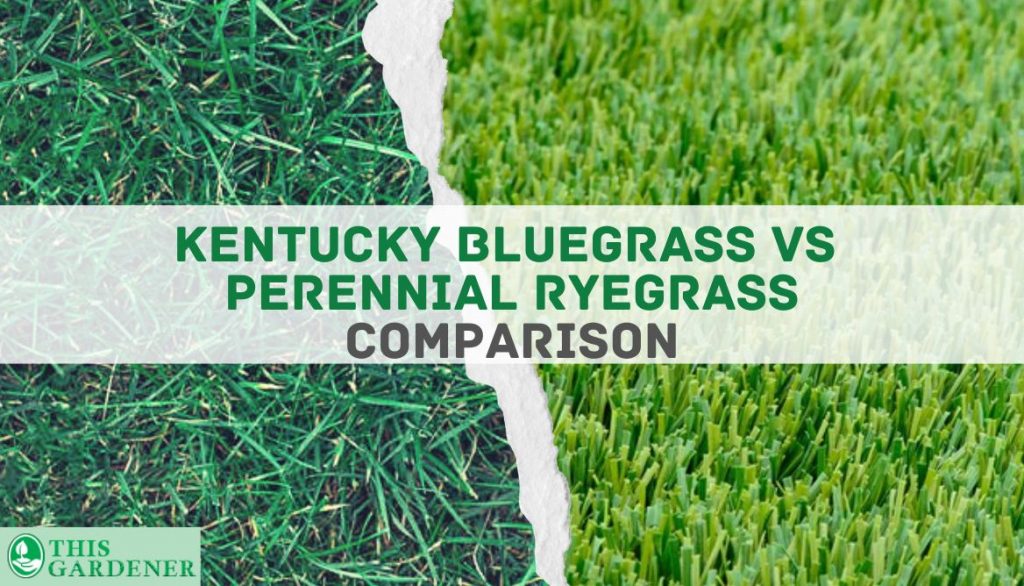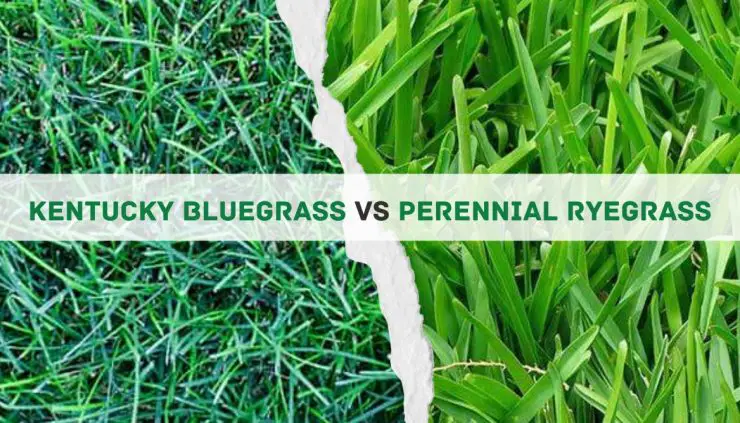Lawns, sports fields, athletic fields, or even golf courses can be very challenging tasks to maintain. You need to know how to germinate the seed, tackle disease problems, keep track of seeding, and ensure that the planting conditions are ideal for the grass.
If you want to know about grasses then try comparing two of the best grasses. Kentucky bluegrass vs perennial ryegrass can be a suitable comparison to let you know which one is the best!
Ryegrass and Bluegrass both have their differences but there are reasons to choose one over the other. For example, ryegrass is aesthetically appealing while bluegrass isn’t. Bluegrass is hard to maintain and ryegrass is easier.
While both grow well in their soil type, bluegrass requires more fertilizer to grow well. So, ultimately you can deduce that ryegrass is better. But, rest assured as Bluegrass also has its perks. Let’s hop into the details for a complete review.
Contents
Highlights:
- Ryegrass is very beautiful and ideal for lawns.
- Ryegrass is a fast-growing and low-cost maintenance grass.
- Kentucky Bluegrass is excellent in drought conditions.
- It competes against weeds extremely well and is an ideal nursing grass.
A Quick Comparison of Kentucky bluegrass vs Perennial ryegrass
Ryegrass grows pretty well as a solo turf while bluegrass is better as a supportive grass that adds richness to the turf.
Ryegrass may be low maintenance but bluegrass is better in drought conditions.
Ryegrass is labeled as one of the most ideal pasture grasses for animals. Bluegrass makes your lawns more lush and fuller.
Bluegrass has less tolerance for traffic but ryegrass is better at it and can be used on golf courses or sports fields.
Key Differences Between Kentucky Vs Ryegrass
Parameters | Perennial Ryegrass | Kentucky bluegrass |
Leaf Type | Tapered | Boat Shaped |
Wear Tolerance | Excellent Wear Tolerance | Poor Wear Tolerance |
Sunlight | Full on sun | Full on sun |
Shade | Partial Shade | Partial Shade but more than Ryegrass |
Root Type | Fibrous and bundled | Shallow and Stolons (Rhizomes) |
Drought Tolerance | Average | Excellent |
Germination Duration | Fast (5-7 days) | 3 Weeks or more |
What is Kentucky Bluegrass?

Kentucky bluegrass is a cool season grass that can withstand mild summers and winter seasons. It requires a high amount of water and extra care.
Identifying Kentucky bluegrass
Some visible features are as follows:
- It is a dark green colored grass with a bluish tone.
- It has a boat-shaped leaf with a rounded tip that folds.
- It grows through underground stems that are famously known as rhizomes.
What is Perennial Ryegrass?

Perennial ryegrass is an ideal grass choice for lawns. It is a cool seasoned grass that grows aggressively during the winter and goes dormant during the summer.
Identifying features of Perennial ryegrass
Some notable features of perennial ryegrass are as follows:
- It is a bright green grass.
- Perennial ryegrass has pointed auricles.
- The grass has tapered leaf tips.
Comparing Kentucky bluegrass vs Perennial ryegrass

Among all the grass seed mixtures, Perennial ryegrass is one of the best lawn grass due to its high traffic tolerance. Kentucky bluegrass does not tolerate heavy foot traffic. Annual ryegrass and Kentucky bluegrass both are cool season grasses.
A perennial ryegrass lawn is lush green while Kentucky bluegrass has a dark green look. Perennial ryegrass lawns may show a fast germination rate while Kentucky bluegrass takes its time and grows slowly.
Appearance
Annual ryegrass is bright green. While Kentucky bluegrass is dark green. The leaves of perennial rye are pointed and tapered while the Kentucky bluegrass has very unique rounded boat-shaped leaves.
Weeds, growth, and sod formation
Perennial ryegrasses are famous for choking out weeds easily as they are aggressive and fast-growing turf types. They usually outgrow and feed on the nutrients before the weeds can grow.
Ryegrass will usually grow in form of fibrous roots that are bundled together. Their roots are extensive and can absorb nutrients quickly from the soil to germinate quickly.
Bluegrass has shallow roots and grows under the soil via stolons called rhizomes. If you are expecting it to choke out weeds then it is one of the best weed killers.
Best Uses for Kentucky bluegrass vs Perennial ryegrass (Wear tolerance and recovery)
Perennial ryegrass is excellent for lawns at home and the grass seed can grow quickly. Perennial ryegrass germinates quickly and thus perennial ryegrass lawn will become green in very less time. It has a very reliable wear tolerance and can rapidly recover.
Kentucky bluegrass on the other hand is a slow-growing grass seed. It is ideal as a supportive lawn grass. It is not suitable for high-footprint zones.
Soil Types and pH Needs
Perennial ryegrass germinates faster without an issue in well-drained loamy soil with a high fertilization rate. It requires a 5.5 to 7.5 pH level.
Kentucky bluegrass is a grass type that grows the best in well-soaked loamy clay soil. It has a requirement of 6 to 7 pH levels.
Water Needs
Annual ryegrass needs only 1″ of water once a week. Too much water can become an issue for this grass species.
While Kentucky bluegrass has a higher requirement of water which is 1.25″ to 1.5″ twice a week. This species has average tolerance to standing water.
Fertilizer Requirements
If we take the growth habit of both types into account with the requirement of fertilizer then there is a huge difference.
Ryegrass does not require a very high amount of fertilizer. It can be grown best in 1-1.5 lbs. per 1000 sq. ft. lawn.
Bluegrass needs about 3 to 6 lbs. per 1000 sq. ft. of lawn area. It is a high-demand fertilizer seed.
Sun, Shade, and Temperature Requirements
Let’s talk about sunny areas, ryegrass requires full sun but it also has shade tolerance. This grass type requires cool conditions and temperatures but will go dormant if the temperatures decrease below 55 F and if it increases above 85 F.
Do not confuse perennial ryegrass and bluegrass requirements at all. Perennial ryegrass and Kentucky differ greatly in this aspect. It is highly recommended that bluegrass be grown in full sun areas. It has an ideal temperature range of 70 F. It will become dormant if the temperatures go below 50 F and if the temperature rises above 80 F.
Durability
In terms of durability both grass compete differently, ryegrass can fill in the gaps and patches on the lawn as it is a fast-growing grass.
Meanwhile, bluegrass spreads slowly but is a strong-rooted grass. It cannot quickly fill in the patches.
Common Pests and Diseases
Both the grasses have risks regarding pests and diseases. Bluegrass has a chance to be attacked by grubs, ants, and thrips. While perennial ryegrass is more likely to be injured by digging animals, mold, and mildew.
Mowing Needs
Ryegrass and Kentucky bluegrass both require mowing. As both are winter grass, they both do not need frequent mowing.
Rye grass can be maintained at a height of 2″ and needs mowing once a week during winter. If the temperature conditions exceed 85 F then it does not need mowing.
Bluegrass is a grass that can be kept at a height of 2″ to 3″ and also needs once a week mowing. If you intend to keep it at a short height of 1″ then it may need mowing twice a week.
Cost of Maintenance
In comparison, ryegrasses are less maintenance-requiring grass type. They need average maintenance and a 1″ inch watering to stay healthy.
Bluegrass is considered a nurse grass to ryegrass. And it is a high-maintenance grass, requiring more water and fertilizer to grow well.
Kentucky Bluegrass vs. Perennial Ryegrass: Which Option is Right for You?
If you want a hassle-free grass seed option for your lawn then perennial ryegrass is highly recommended. Its beautiful look, low-cost maintenance, and temperature ranges make it ideal for you.
Choosing the Best Option for Climate
If we talk about climate then both of the grasses grow well in cool conditions. Extremely hot or harshly cold conditions can either kill or make them dormant. The average ideal temperature ranges both are 50-70 F.
Keeping into consideration the advantages of both, we can assume that ryegrass is the winner here!
Growing zones
According to the USDA, ryegrass grows best in zones 3 through 9. The ideal conditions for its growth are areas that have mild summer temperatures. Bluegrass similarly grows in the same zones.
Summary: Even being similar in growth zones, most homeowners prefer ryegrass as it is easier to maintain and grow.
Choosing the Best Option Based on Maintenance
If you want a lawn turf that is even better than tall fescue then opt towards ryegrasses. These bright green plantations are excellent for your lawns. And they require less maintenance cost while requiring average water needs.
Bluegrasses have a different story, they are high-maintenance grasses that need a lot of water to grow. This is one of the reasons that you end up spending a lot on them. They also need frequent winter overseeding as they have a slow germination and growth rate.
Summary: Yet again, ryegrass takes the lead as the winner due to its cost-effectiveness.
Choosing the Best Option Based on Susceptibility to Pests and Disease
If you are choosing grass in accordance with pests, the best choice between perennial ryegrass and Kentucky is ryegrass. Bluegrass is more likely to get infested with pests. While ryegrass if maintained in optimum conditions will create fewer hassles.
Summary: Ryegrass wins the debate here as the best. As it is easier to grow.
What are the similarities between Kentucky bluegrass vs perennial ryegrass?
Being ideal for lawns, homeowners might select the grasses as per their comfortability and budget.
None of the homeowners want to grow grass which can become a problem for them in the long run. They can reject the idea of being hard to grow grasses.
Perennial ryegrass and Kentucky both have some similarities that can be appreciated. Read below to know more in detail:
Annual Ryegrass and Bluegrass are Cool Seasoned
Both of the grasses are ideal for winter seasons but can go dormant if the temperatures become very high or very low.
Bluegrass and Perennial Ryegrass Tolerate Full Sun
Ryegrasses and Bluegrasses can tolerate sunlight easily. And they require 5+ hours of sun without any issues.
Bluegrasses are highly recommended to be grown in areas where full sun is for a prolonged period.
Kentucky Bluegrass Perennial Ryegrass Shade Tolerant
While some grasses are extremely sensitive to shade. These two types of grass perform perfectly well with average to less tolerance but they do not go dormant or die in shade. Versatility is one of the best aspects of these grasses.
FAQ
Is Perennial Ryegrass Suitable for Lawns?
It is an ideal choice for lawns due to its rapid germination ability and it can tolerate traffic without any issue.
How Do You Tell the Difference Between Ryegrass and Kentucky Bluegrass?
The primary identification is that perennial ryegrass has tapered leaves while Kentucky bluegrass has boat-shaped leaf tips.
Can I Mix Perennial Ryegrass With Kentucky Bluegrass?
The primary identification is that perennial ryegrass has tapered leaves while Kentucky bluegrass has boat-shaped leaf tips.
Can I Mix Perennial Ryegrass With Kentucky Bluegrass?
Yes. You can mix Kentucky bluegrass perennial ryegrass without any issue.
Why Mix Kentucky Bluegrass and Perennial Ryegrass?
Kentucky bluegrass grows slowly and when you mix rapidly growing grass like perennial ryegrass, it becomes the best combination for the lawn. Kentucky bluegrass perennial ryegrass gives the best lawn look with the best features.
Conclusion
If you are someone that loves fine texture grass then you will fall in love with ryegrass and bluegrass. It all depends on your requirement and budget. While lawn care might seem a simple task it is not that simple. You need to fulfill the requirement of greenery in terms of fertilizer, water, and mowing.
Other grasses may have issues, but ryegrasses and bluegrass are considered the most ideal for lawns as they go well as a soloist or even as a combo. And in comparison, their lawn care is way easier!
If you want to retain your lawn and make sure that the turf is in premium condition. Let us know about your queries in the comments section and we will respond back quickly!
References
- https://www.lawn-care-academy.com
- https://yardthyme.com/kentucky-bluegrass-vs-perennial-ryegrass/
- https://wemowdallas.com/perennial-ryegrass-vs-kentucky-bluegrass/
- https://thebackyardpros.com/kentucky-bluegrass-guide/
- https://lawnmowerguru.com/perennial-ryegrass-vs-kentucky-bluegrass/
- Best Ariens Snowblower: How to Сhoose the Right One For You - December 1, 2022
- Best Track Snowblower: How to Choose the Best? - November 29, 2022
- Kentucky Bluegrass vs Perennial Ryegrass - October 7, 2022


Add comment